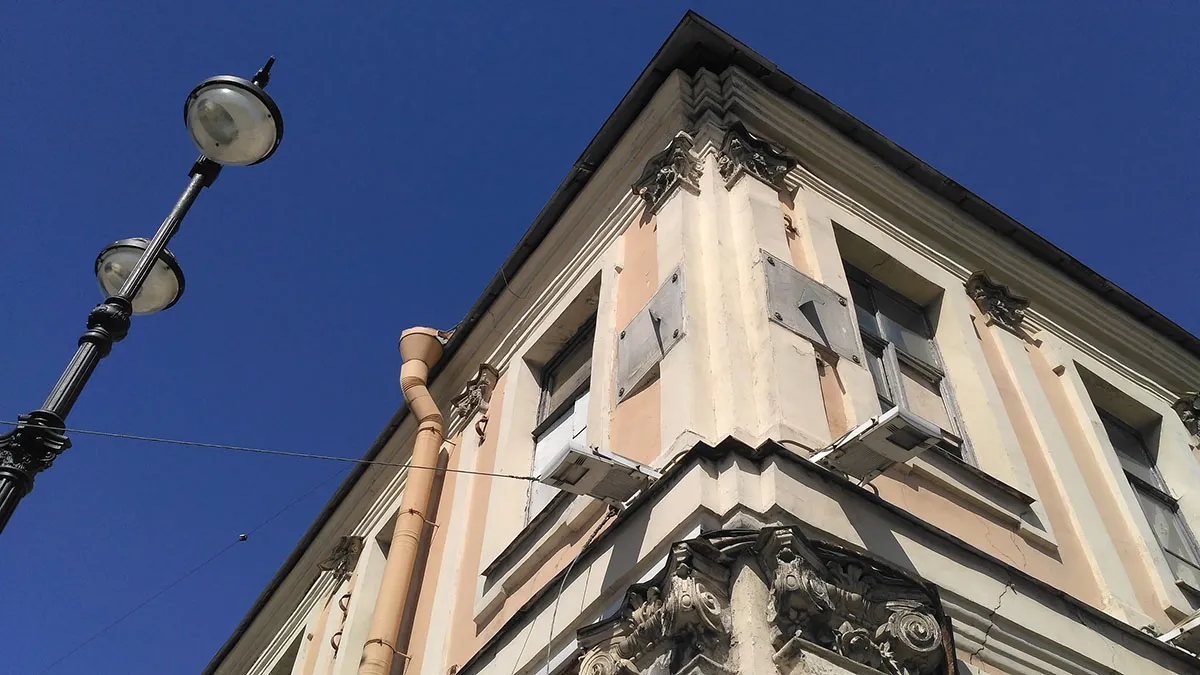
I decided to take a walk on this sunny day along the Kadet line on Vasilievsky Island. The beginning of my walk was at the sundial at the corner of the Kadet Line and Universitetskaya Embankment. This clock has a very simple style: just numbers on marble slabs. They are considered to be one of the oldest sundials in the city, although in fact we can't know anything exactly about this clock: neither who made it, nor when it was installed.
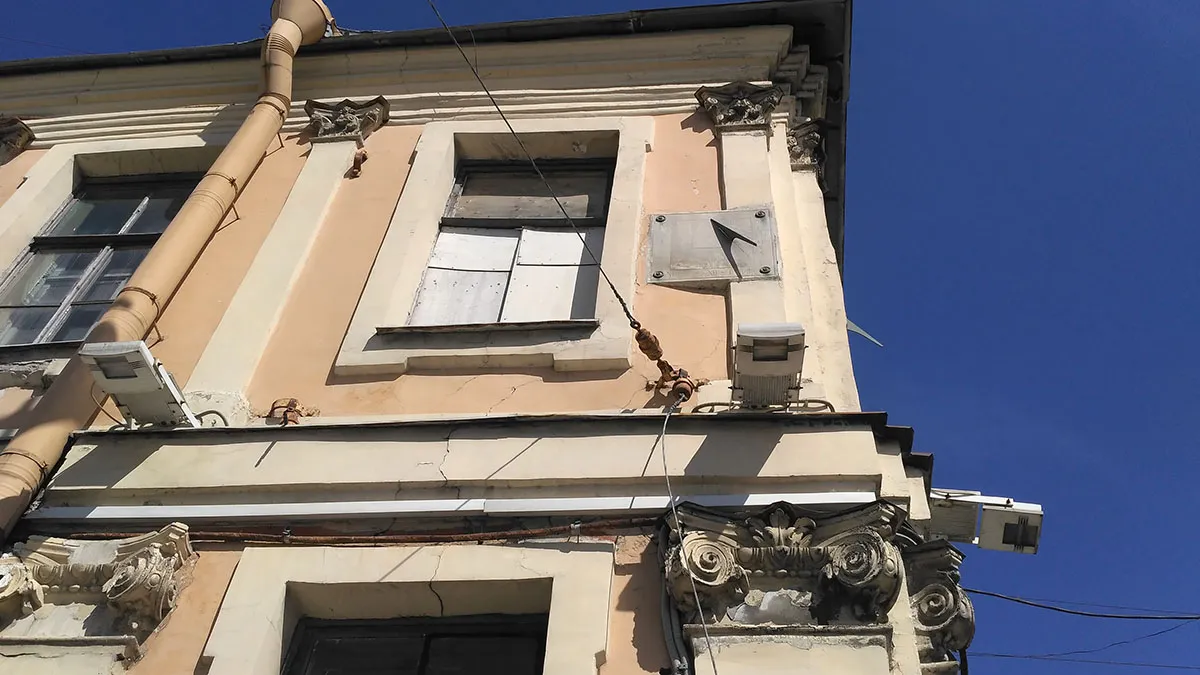
The sun was shining brightly, and I could easily see the time on the sundial: a few minutes to two. The time on my smartphone was exactly the same, but a little more accurate, 13:55. The clock hangs pretty high, and without special optics it's hard to get a shot that shows the numbers clearly. Roman numerals are used in this clock, with the number "12" at the bottom center and the numbers 1, 2, and 3 coming from it to the right.
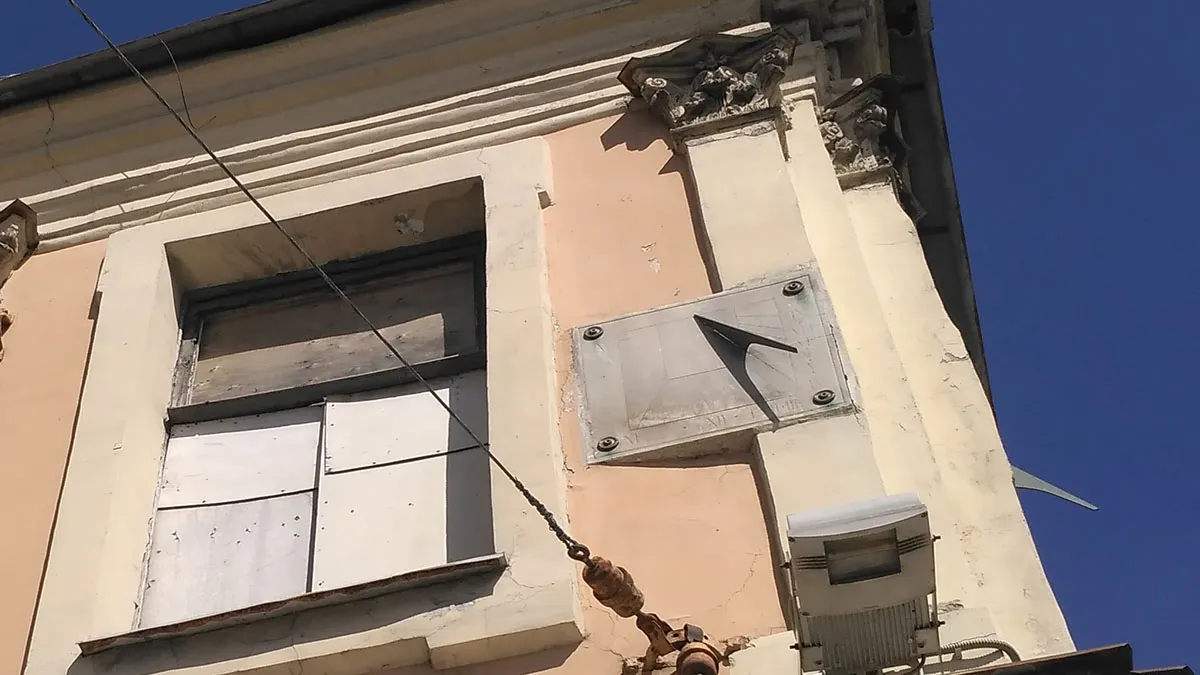
Kadetskaya Line is one of the oldest streets in our city. St. Petersburg was founded in 1703 and according to the original plan Vasilevsky Island was to be the central district of the city.
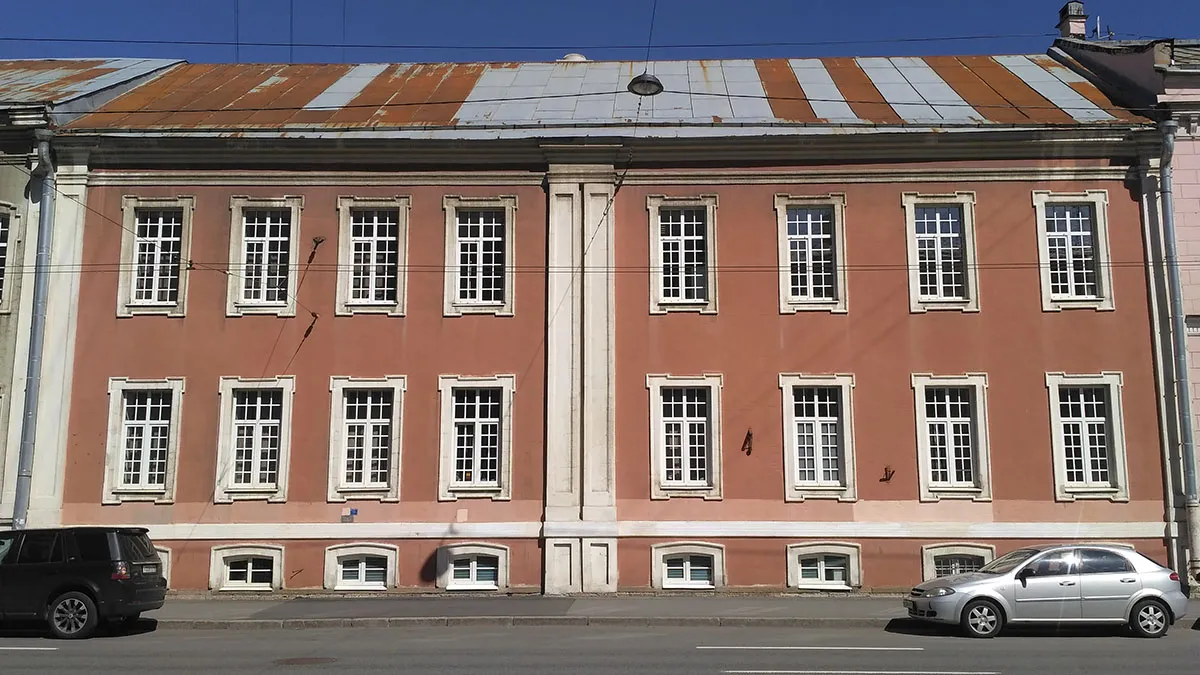
You may have heard or read that Emperor Peter the Great wanted to make the city the Venice of the North, and to do this he planned to dig many canals on Vasilievsky Island connecting the branches of the Neva River. Such canals were drawn on the Master Plan of St. Petersburg architect Jean-Baptiste Le Blond, designed by him in 1717. But this idea was never implemented, the plan of the city was very much changed when it turned out that the western part of the island each year suffers a lot from the fall floods. An additional reason for changing the plan was the death of the architect in 1919, he died of smallpox. Only a small part of the buildings built according to his designs have survived to this day.
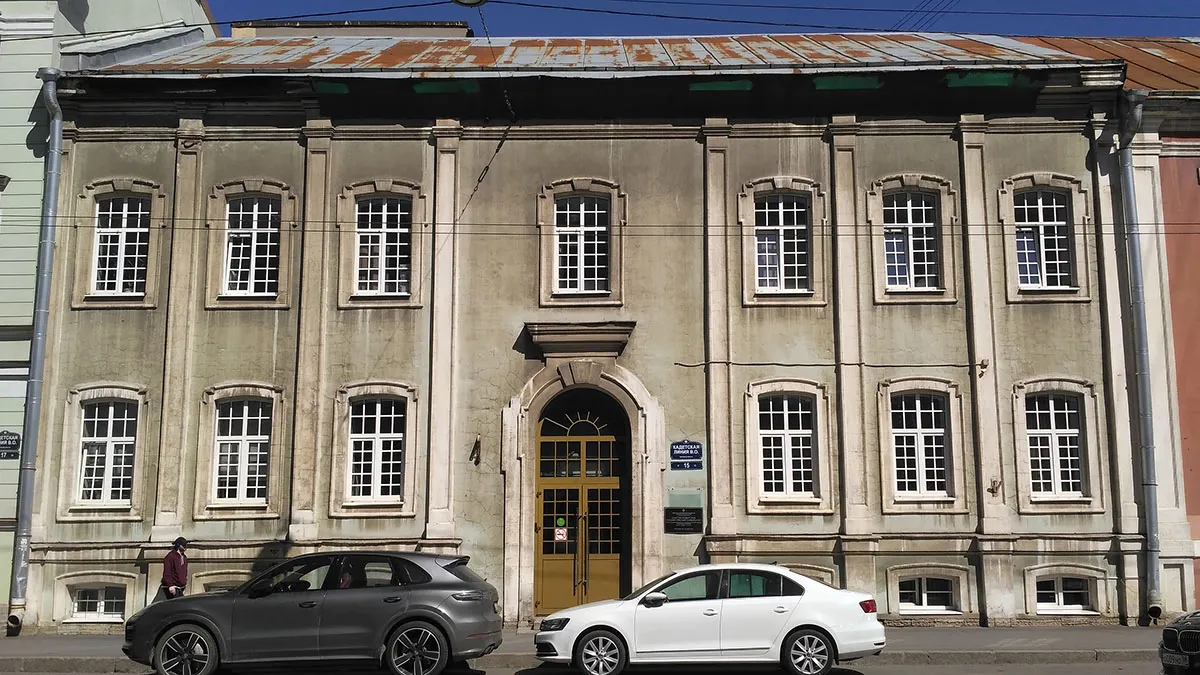
The first houses of St. Petersburg were built mostly of wood, and only those buildings that were specially preserved as memorial structures have survived to this day. For example, the wooden House of Emperor Peter the Great has been preserved; it is considered the first building of the city and is now a museum. Even the stone buildings have been rebuilt and changed many times, very few original structures have been preserved. The two houses on Kadetskaya Liniya that caught my eye were also partially reconstructed, but they have retained their 18th-century appearance. Both were built in the 1720s, using an exemplary design for a house for the "distinguished" designed by architect Le Blond a few years earlier.
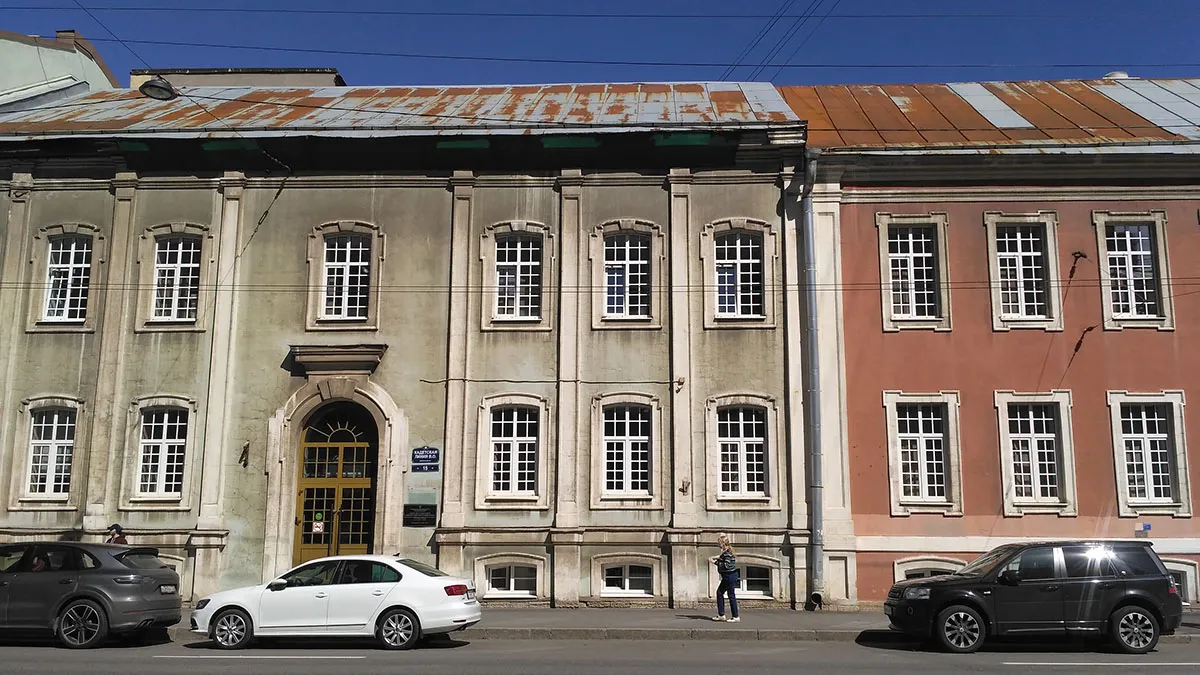
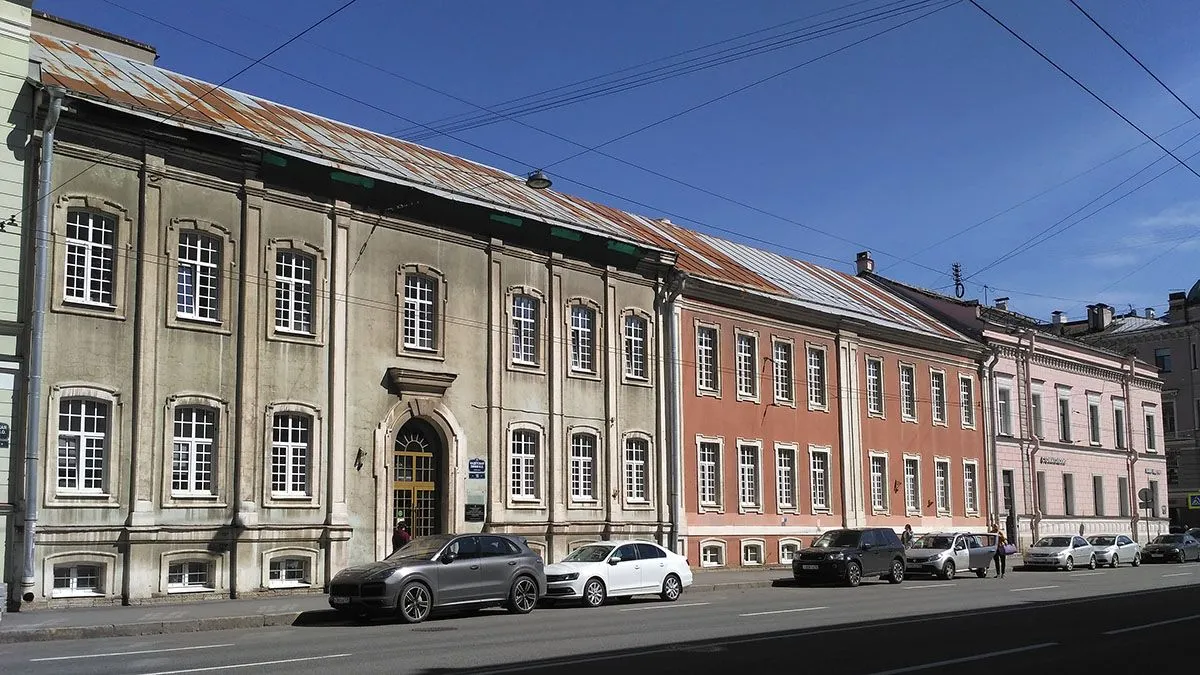
A little further on I saw another house, built in the 18th century, but at the end of the century, in 1785. It is believed that the appearance of the facade of the house has not changed in the future, and we see it exactly the same as the passers-by in the 18th century.
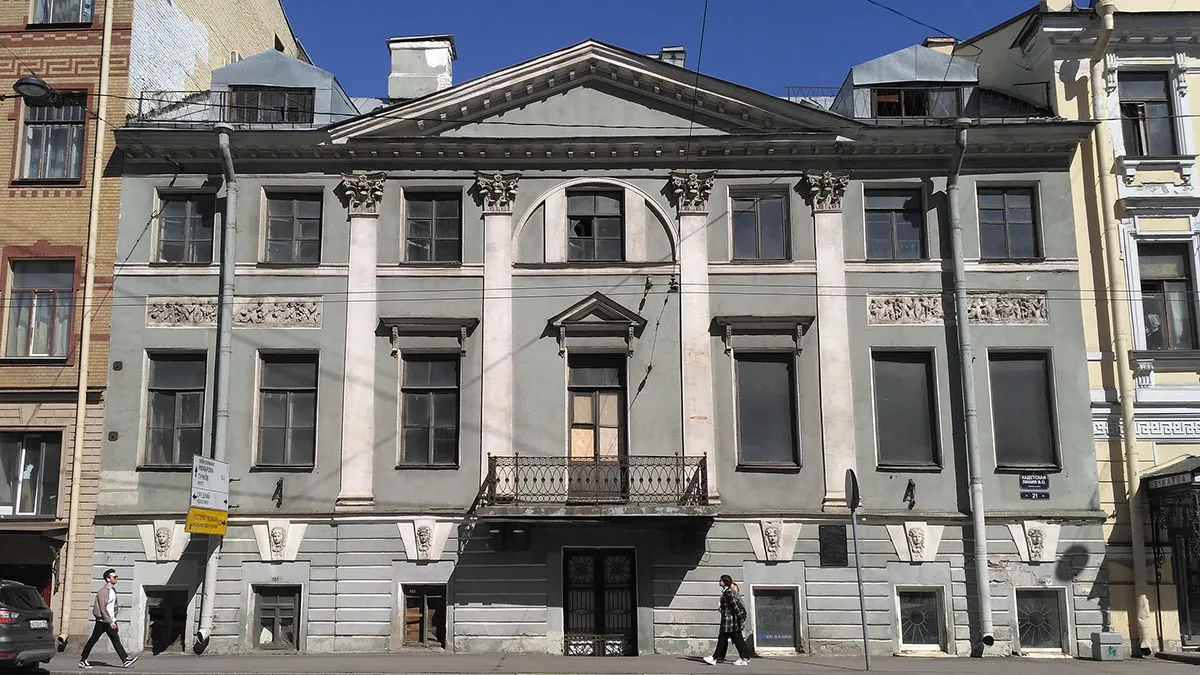
| ○ | ○ |
|---|---|
| Smartphone | Xiaomi Redmi 3 |
| Location | Saint Petersburg, Russia |
This is my entry for the #WednesdayWalk challenge by @tattoodjay and for the #MakeMeSmile challenge by @elizacheng.
